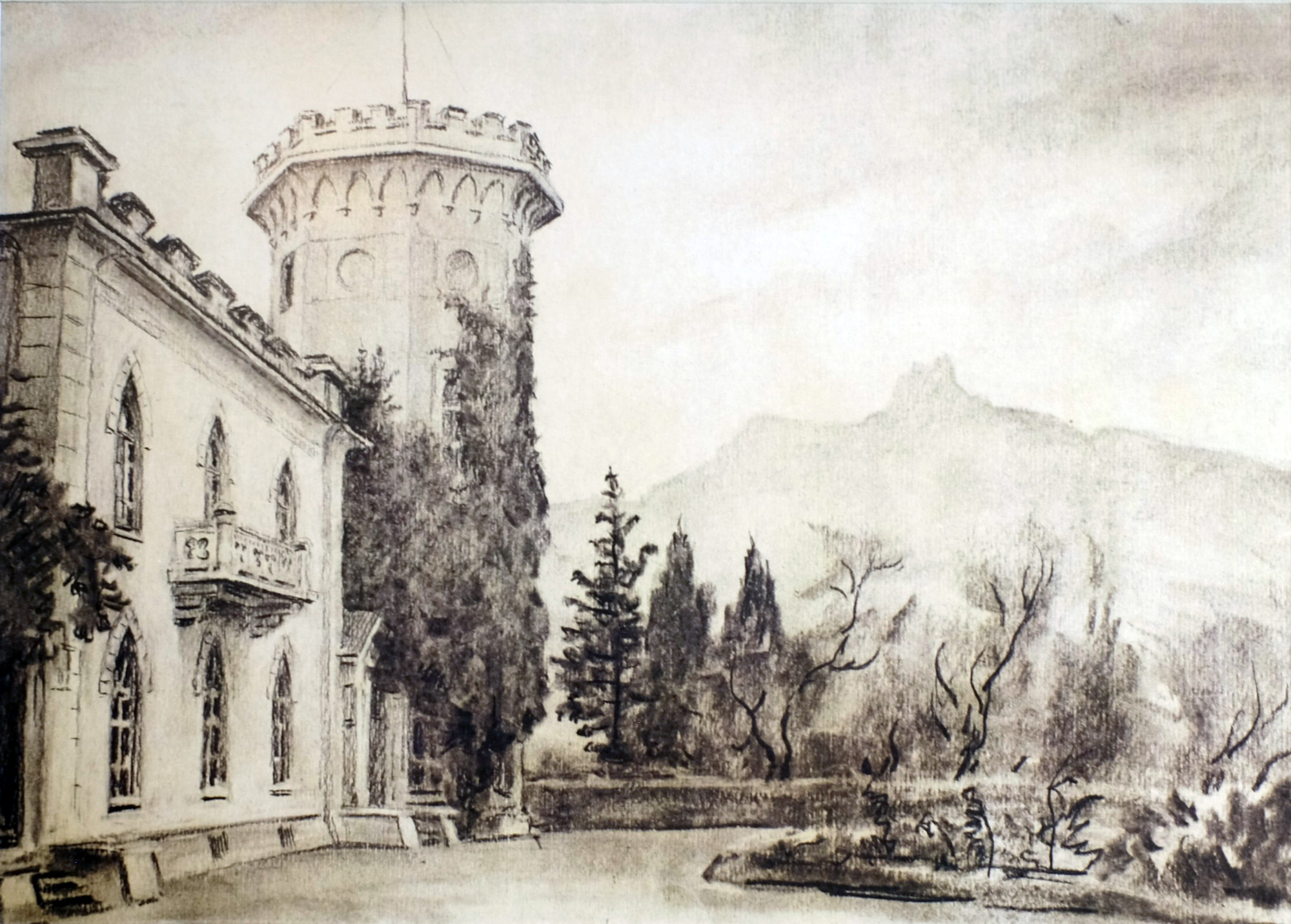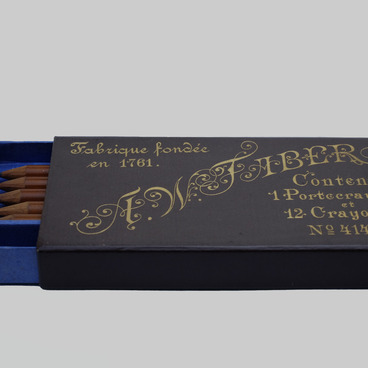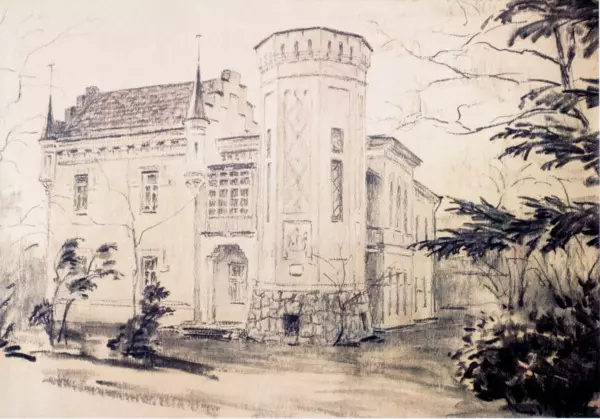Sketch by writer’s nephew Sergei Mikhailovich Chekhov captured the dacha of Countess Panina in Gaspra. The family of Leo Nikolaevich Tolstoy lived here in the period from 1901 to 1902.
The palace in Gaspra, also known as the Golitsyn Palace and the palace of Countess Panina, was built in the first half of the 19th century. The Alupka Palace, built for Count Vorontsov, the Governor-General of the Novorossiysk Territory, was taken as an example of the manor house. The palace in Gaspra, like the palace in Alupka, is built of local material, gray limestone. William Hunt, the architect, built the palace in the style of a Gothic medieval castle considering his customers’ wish.
Countess Sofya Vladimirovna Panina inherited this palace in the doldrums. However, her entrepreneurial spirit gave the palace a second life. Having restored and put in order the building itself and the adjacent park, she began to rent the palace as a dacha to wealthy people.
From September 1901 to July 1902, Leo Nikolaevich Tolstoy improved his health in Gaspra after a serious illness. He came to Crimea with his family at the invitation of Countess Panina. The news of Tolstoy’s arrival excited the public. His health quickly recovered, and the writer’s fellow authors began visiting him. One of such visitors was Anton Pavlovich Chekhov, who resided in 12 kilometers from Gaspra, in Yalta. Chekhov and Tolstoy liked each other extraordinarily. During Tolstoy’s stay in Gaspra, Chekhov often visited him.
Leo Nikolaevich called Chekhov ‘an incomparable painter of life’ and ‘Pushkin in prose’, highly appreciating his literary works. And he treated Anton Pavlovich with deep sympathy as a person. He considered him ‘charming, modest, sweet.’ For Chekhov, Tolstoy was an indisputable authority. Anton Pavlovich sincerely loved him and noted that the death of Leo Nikolaevich would have left a huge void in his life. This confession was made just at the time when Tolstoy got ill and was in Gaspra. Chekhov said that the rest of the writers can do nothing, as Leo Nikolaevich ‘does all for everyone.’ And the authority of Tolstoy, according to Anton Pavlovich, during the life of the great writer will not allow bad taste, vulgarity, and ‘embittered pride’ to break through into Russian literature.
Returning to Krasnaya Polyana, Tolstoy sent his photo, taken among the winter trees of the estate, to Chekhov in Yalta. The inscription on the back says: ‘To dear Anton Pavlovich Chekhov, Leo Tolstoy. 1903. June 18 “.
The palace in Gaspra, also known as the Golitsyn Palace and the palace of Countess Panina, was built in the first half of the 19th century. The Alupka Palace, built for Count Vorontsov, the Governor-General of the Novorossiysk Territory, was taken as an example of the manor house. The palace in Gaspra, like the palace in Alupka, is built of local material, gray limestone. William Hunt, the architect, built the palace in the style of a Gothic medieval castle considering his customers’ wish.
Countess Sofya Vladimirovna Panina inherited this palace in the doldrums. However, her entrepreneurial spirit gave the palace a second life. Having restored and put in order the building itself and the adjacent park, she began to rent the palace as a dacha to wealthy people.
From September 1901 to July 1902, Leo Nikolaevich Tolstoy improved his health in Gaspra after a serious illness. He came to Crimea with his family at the invitation of Countess Panina. The news of Tolstoy’s arrival excited the public. His health quickly recovered, and the writer’s fellow authors began visiting him. One of such visitors was Anton Pavlovich Chekhov, who resided in 12 kilometers from Gaspra, in Yalta. Chekhov and Tolstoy liked each other extraordinarily. During Tolstoy’s stay in Gaspra, Chekhov often visited him.
Leo Nikolaevich called Chekhov ‘an incomparable painter of life’ and ‘Pushkin in prose’, highly appreciating his literary works. And he treated Anton Pavlovich with deep sympathy as a person. He considered him ‘charming, modest, sweet.’ For Chekhov, Tolstoy was an indisputable authority. Anton Pavlovich sincerely loved him and noted that the death of Leo Nikolaevich would have left a huge void in his life. This confession was made just at the time when Tolstoy got ill and was in Gaspra. Chekhov said that the rest of the writers can do nothing, as Leo Nikolaevich ‘does all for everyone.’ And the authority of Tolstoy, according to Anton Pavlovich, during the life of the great writer will not allow bad taste, vulgarity, and ‘embittered pride’ to break through into Russian literature.
Returning to Krasnaya Polyana, Tolstoy sent his photo, taken among the winter trees of the estate, to Chekhov in Yalta. The inscription on the back says: ‘To dear Anton Pavlovich Chekhov, Leo Tolstoy. 1903. June 18 “.






